The Antalya Archeology Museum is one of the best museums in Turkiye, especially regarding the amount of space allotted to Byzantine history. Nevertheless, you could easily miss it. Following are some treasures you can look for while walking through the Museum.
Crosses near the entrance
Near the entry, there is a banner (left side of the turnstiles) displaying the Byzantine relics, these items can be found on the second floor. Most likely, the museum uses this banner to promote the return of these items from the Dumbarton Oaks in Baltimore in 2021.[1]https://chasingaphrodite.com/2012/05/16/the-harvard-list-turkey-wants-dumbarton-oaks-to-return-the-sion-treasure/ Yet, this provides a rare acknowledgment of Byzantine history in a Turkish setting.
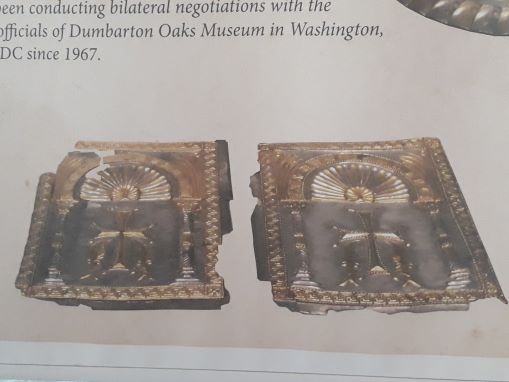
Corydalla – The items were found in the Corydalla ancient site which is near the Kumluca village west of Antalya (East Lycia area). The items were found just north of Myra where St. Nicholas lived. These items were found on the former Byzantine Zion Monastery and date from the 6th century.[2]https://blog.delphinhotel.com/article/23620-coriydalla-krydalla-antik-kenti-ve-kacirilan-sion-hazineleri—antalya

First-Floor Christian Objects
On the ground floor, the section called “The Hall of the Regional Excavations” covers numerous Byzantine finds from Semayuk, Limyra, Elmali and Perge (all ancient cities near Pamphylia in the Lycia region: Acts 2:10, 13:13-14 and 18:23). You will find additional items from Elmali near the steps to the second floor.
This bronze cross is in the Semayuk section, while the Limyra section highlights jewelry and a cross necklace. These ancient area hosted many Byzantine churches.

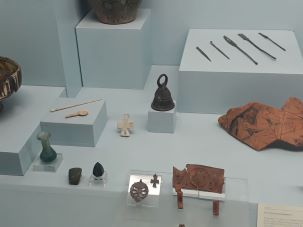
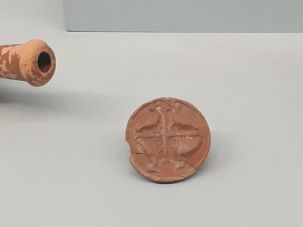
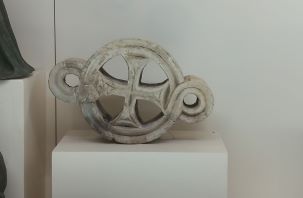
Elmali Church – near Second Floor Stairs

The 6th-century ornate archway displays the Justinian influence on the Byzantine Church in Elmali. This region, located just 50 kilometers west of the city of Antalya, represents a major area of Christian influence. Historically, from 375 to 879 AD, at least six bishops were listed in council meetings from these regions. The amazing, marble cross in the center highlights the beauty of these ancient churches.
Another amazing, but unexplained, display is the marble ambo (pulpit) of the Elmali Byzantine Church. The ambo was normally an elevated area to read the Word of God to the congregation. On the relief, two angels border the Lord Jesus, who stands below a cross. In the 6th century, the Byzantine Church often depicted doves or peacocks in its art. Doves are a biblical symbol, while peacocks were borrowed from Persian art.
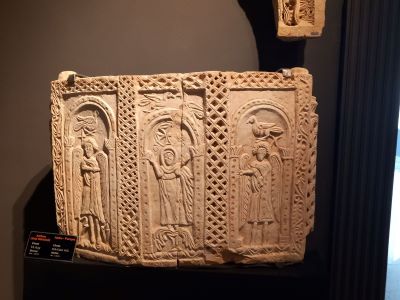
Upstairs Byzantine Display
Consistently, Türkiye ignores or minimizes the thousand plus years of Byzantine history and even some of the YouTube videos of the Museum ignores the same history. However, the upper level of the Antalya Archeology Museum marks the primary area for Byzantine history in all of Türkiye. Do not miss going upstairs. The small sign says only, “Coins, Small Artifacts and Icons” – not a very tempting invitation. The picture below shows the stairs to the exhibit.
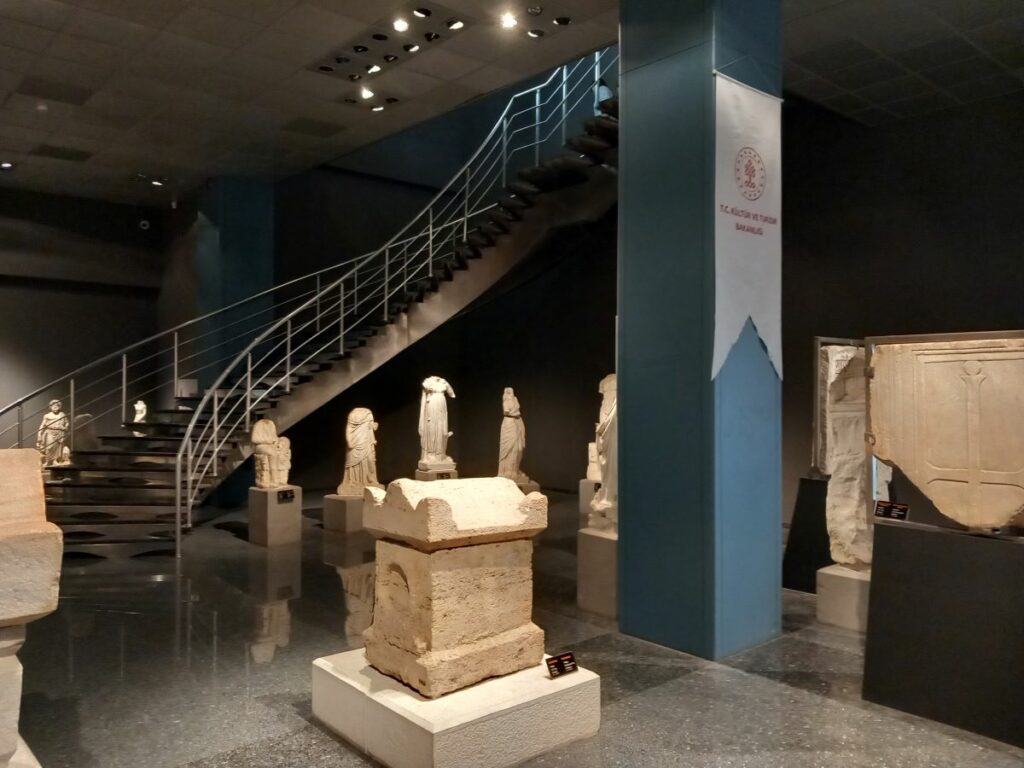
The number of crosses, objects of worship, icons and coinage in the Antalya Archeology Museum is unmatched and provides a reference for the wealth of that time period.
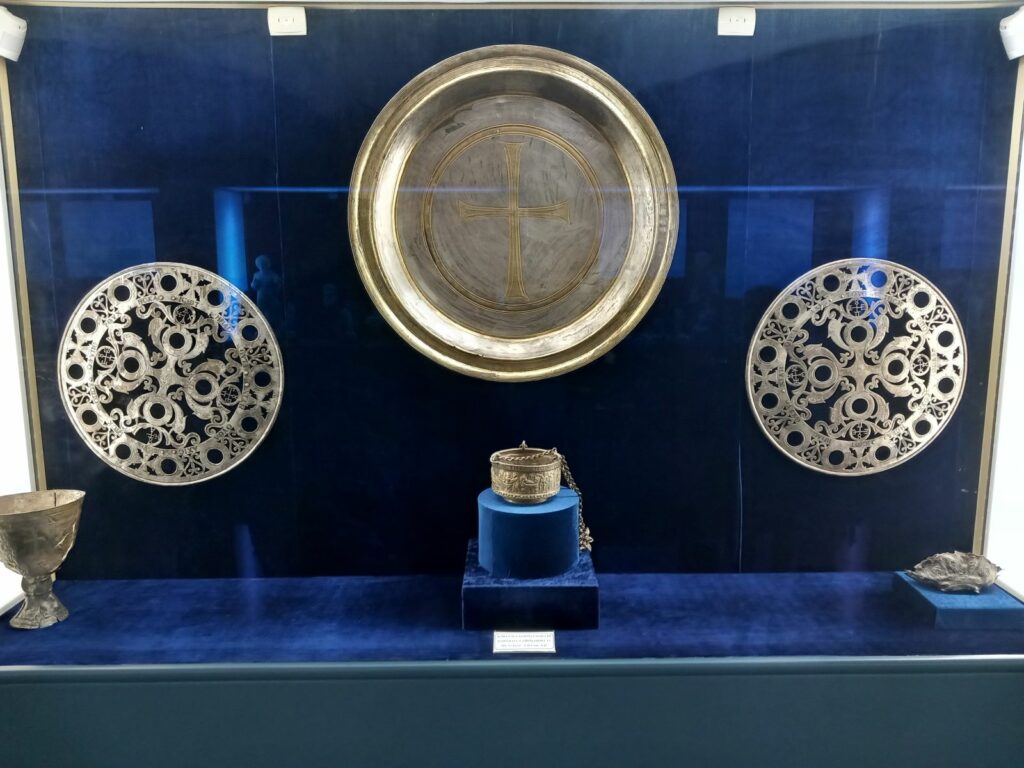
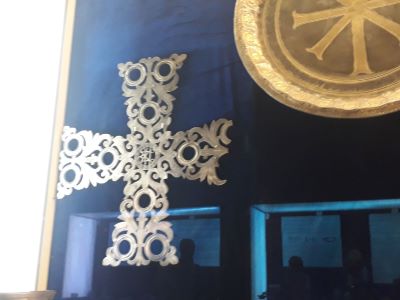
These objects from the 6th century are in good condition. The main Byzantine church in Antalya was quite important as a port city. The Panhagia Church stands today as a Mosque, still displaying many crosses on the archways and walls. The museum mentions in the banner that these items were found 30 meters from a church in Korydalla (this is 100 kilometers west of Antalya, near Finike). Most likely, because of the coming Arab invasion, the believers hid the items till they were found in the early 1960s.
Greek Icon Wall
The back wall displays Greek icons used for worship or instruction. These 19th century pieces comprise the largest display in the country.[3]some are on display also in the Hagia Sophia New Museum. Some of the pieces label the year made (1836 and 1837). The Greek population numbered 8,000 forcefully migrated to Greece in 1922. Numerous Greek church buildings still remain in the old city or East of the City. Despite a local guide whom I took a tour with in the old city, Greeks lived there previously. My guide denied that Greeks ever lived in the city and purposely, his tour did not pass any of the more Greek dominate sections. Yet, here is the proof of the Greek presence in at least the 19th and early 20th century.
In the land of Türkiye, remembering that the Byzantine churches from the 6th century on, adopted the Greek language becomes quite important. So, these Byzantine churches became part of what we now call Greek Orthodox churches. The wooden paintings evidences what was important to these believers: Jesus, Mary, John the Baptist, St. George and St. Nicholas.
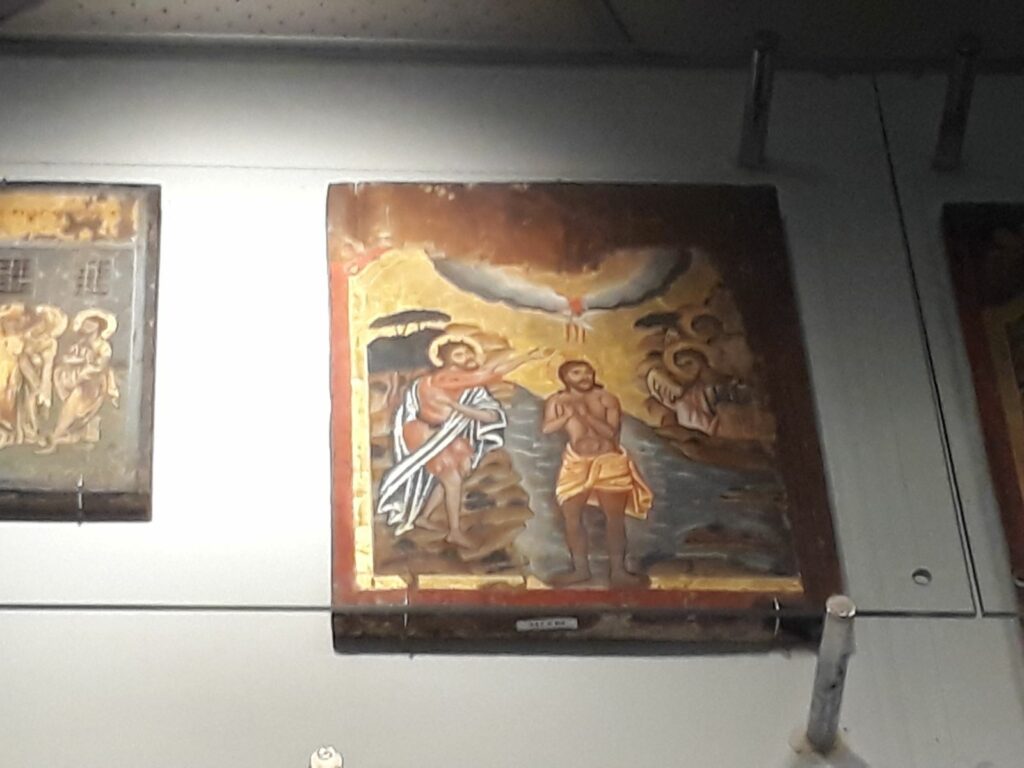
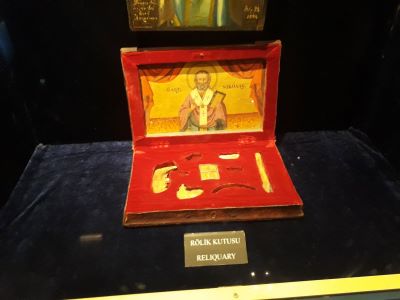
St. Nicholas (known as Santa Claus for some) who ministered in Demre (Myra) which is west of Antalya. His supposed bones from the 4th century remain on display near to the icons.[4]https://www.stnicholascenter.org/who-is-st-nicholas/real-face/antalya-museum In a recent study, they found these bones were duplicated from the one’s stored at St. Nicholas’ Lido in Venice.
Courtyard Cross
The way entry way to the outdoor courtyard displays some crosses. The coat of arms of dragons most likely represent Peter I coat of arms that was displayed after he conquered Antalya in 1361.[5]https://turkisharchaeonews.net/object/city-walls-antalya He attacked the city with 120 ships so during that time controlled much of the eastern Mediterranean Sea.[6]https://gw.geneanet.org/comrade28?lang=en&n=cyprus&p=king+peter+i+of Unfortunately, many objects like this do not give date, location or what they are. However, a definite Christian display lies before us.
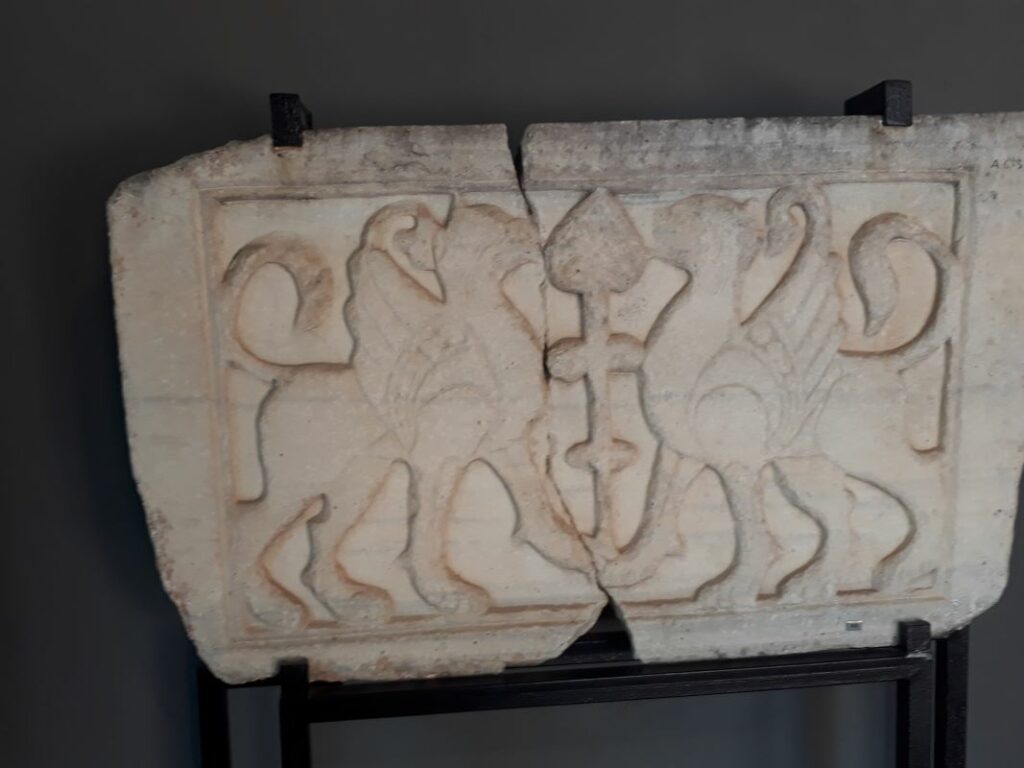
When you exit into the courtyard, the last stone inscription on the right, starts the Greek writing with a possible cross symbol. Then as you turn left, take the second walkway (further from the building, closer to the road) to see multiple crosses near the walkway. The pic below shows four pillars. From right to left:
#1 on the right in the picture – partial broken cross on the capital (the cross faces towards the road), #2 carved cross on lower section (most likely a repurposed pillar for a church). #3 – engraved partial cross. #4 – inserted crosses on both sides of this tall pillar.


In the courtyard beautiful capital (most likely 6th century) from a church displays to the elements of nature. The similarities with the Elmali church items within the Museum give way to thinking that this capital formed a part of an entry way into that former church.[7]The Elmali site is still being researched. See https://www.archaeological.org/fieldwork/turkey-elmali-excavation-ifr/
Love for the Cross
Despite the lack of signage on these key Christian items, the testimony remains in how early believers loved the cross. On at least two occasions I inquired about a catalog to reference the display numbers to some historical write up. On both inquiries no options were given by the Antalya Archeology Museum.
Below is a pillar with capitals that displays a cross. Most likely a re-purposed use of this pillar. During ancient times every important church, temple or square had pillars that marked the entryway. So a cross on this pillar would represent that entry way to most likely a large Byzantine church.
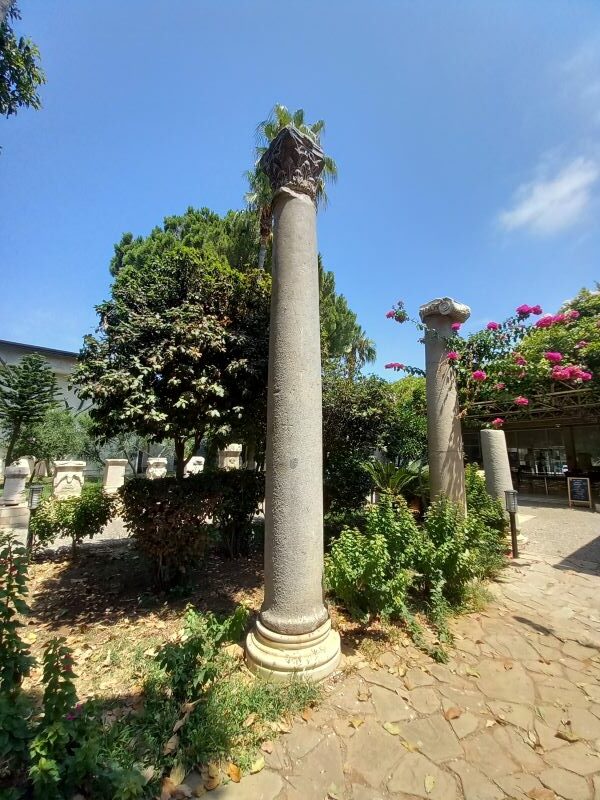
If you enjoyed this little excursion, please check out my walking tour of the old city of Antalya.
References
| ↑1 | https://chasingaphrodite.com/2012/05/16/the-harvard-list-turkey-wants-dumbarton-oaks-to-return-the-sion-treasure/ |
|---|---|
| ↑2 | https://blog.delphinhotel.com/article/23620-coriydalla-krydalla-antik-kenti-ve-kacirilan-sion-hazineleri—antalya |
| ↑3 | some are on display also in the Hagia Sophia New Museum. |
| ↑4 | https://www.stnicholascenter.org/who-is-st-nicholas/real-face/antalya-museum |
| ↑5 | https://turkisharchaeonews.net/object/city-walls-antalya |
| ↑6 | https://gw.geneanet.org/comrade28?lang=en&n=cyprus&p=king+peter+i+of |
| ↑7 | The Elmali site is still being researched. See https://www.archaeological.org/fieldwork/turkey-elmali-excavation-ifr/ |
Leave a Reply